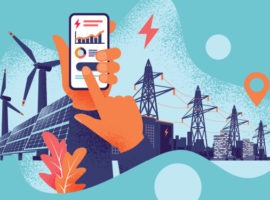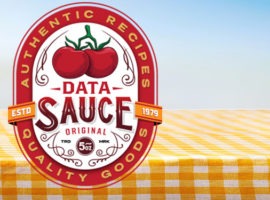Best examples of B2B e-commerce: Companies winning the game
 B2B buyers have changed. How are companies keeping up? Here are five brands that provide shining examples of B2B e-commerce.
B2B buyers have changed. How are companies keeping up? Here are five brands that provide shining examples of B2B e-commerce.
E-commerce has become the backbone of the B2B buying experience. For B2B industries, COVID-19 – and all the disruption it brought – saw to that.
The past 18 months of challenges resulted in an era of innovation for B2B companies, which transformed their businesses with e-commerce, bringing them success today and into the uncertain future.
Across industries, countless businesses are in the midst of their own B2B e-commerce transformation journeys. This is how they’re making it work.
 B2B buyers have changed. How are companies keeping up? Here are five brands that provide shining examples of B2B e-commerce.
B2B buyers have changed. How are companies keeping up? Here are five brands that provide shining examples of B2B e-commerce.
Despite the disruption caused within B2B industries by COVID-19 in 2020 – and despite the ongoing challenges as businesses struggle to handle the new normal – manufacturing companies using the right technology came out on top and are enjoying continued success. They were able to address supply chain disruptions through innovations that gave them control.
Specifically, a modern commerce platform helped companies generate massive increases in gross merchandise volume. This empowered these B2B industries meet demand when order volumes increased.
Manufacturers had another important realization: Your buying experience should be simple, even if your products aren’t. This is a valuable takeaway for every industry.
Buyers won’t excuse a cumbersome and inconvenient experience just because they know your products themselves are complex. They’re used to streamlined and personalized experiences in their everyday lives. Today’s B2B consumer brings B2C expectations to your B2B experience, so product configuration, bundling, and pricing should be simple for you and your buyers.
Whether you call it guided selling or configure, price, and quote (CPQ), the end user wants a streamlined way to assemble their services and equipment for purchase. CPQ solutions help protect margins and maximize revenue at a granular level so you can avoid over-discounting on every detail and reveal new upsell and cross-sell opportunities.
 Manufacturers can improve CX taking lessons from utility companies, which have leveraged innovative technologies to meet customer needs.
Manufacturers can improve CX taking lessons from utility companies, which have leveraged innovative technologies to meet customer needs.
The sudden switch to a work-from-home employee base and online sales at the start of the pandemic may have been inconvenient at first, but many buyers and workers now say this is their preferred method of doing business.
In the world of B2B industries during COVID, high tech has readily adapted to this change in behavior. Digital purchasing experiences save buyers time and effort, and they have done the same for high-tech businesses with the introduction of intelligent chatbots and video chat technologies that reduce the burden on their sales teams.
The pandemic not only changed how these companies interact with customers, but also how their employees collaborate with each other and with partners. The same technologies that helped create better engagements with customers lent themselves to better virtual work environments for employees, too.
These companies are now reinventing themselves, transforming into “virtual-first” employers prepared for whatever disruption may come next.
Employees at these companies are better able to work with colleagues worldwide. Today, successful high-tech companies are investing in supporting a global workforce, because they know employees need to be available to support customers around the world.
Like manufacturers, wholesale distributors using advanced commerce platforms also saw higher order volumes. Disruption to distributors’ business meant new challenges, but also new opportunities to optimize or create new business models that allowed them to differentiate their business and meet the demands of the new post-pandemic buyer.
During the pandemic, distributors were (and continue to be) forced to monitor and react quickly to sourcing risks and shifts in demand to maintain a semblance of business continuity.
By extending their business with additional products and services that provide new sources of revenue and increase customer loyalty, distributors transformed from reactive suppliers into proactive innovators.
 Today's B2B customers want B2C experiences. By leveraging customer data, manufacturers can transform their CX and win over buyers.
Today's B2B customers want B2C experiences. By leveraging customer data, manufacturers can transform their CX and win over buyers.
At the heart of all these strategies is integrated, intelligent technology. Today, B2B companies can chart a path to success by not only learning from the examples of successful B2C businesses, but also by examining the new technologies and solutions these businesses are adopting.
Consumer-facing brands are setting the standard for profitable new business models that better connect them to their customers throughout the customer journey. There’s no reason for B2B companies to sit in the backseat as B2C companies innovate and profit.Stay up to date with new trends in B2C and think strategically about what they could mean for your business. Subscription selling models, which have grown significantly in popularity over the past year, are a compelling example that can be easily lifted and shifted from B2C to B2B.
For example, B2C businesses are using virtual and augmented reality technologies to enable new, highly tactile customer engagement methods. Wearable tech and IoT-enabled devices create new touch points for customer interaction (and valuable data collection).
 Personalization and engagement are key to business today. By consolidating your marketing tech stack, you create better customer experiences.
Personalization and engagement are key to business today. By consolidating your marketing tech stack, you create better customer experiences.
New technology solutions can help you overcome three of the largest challenges today’s B2B industries must solve.